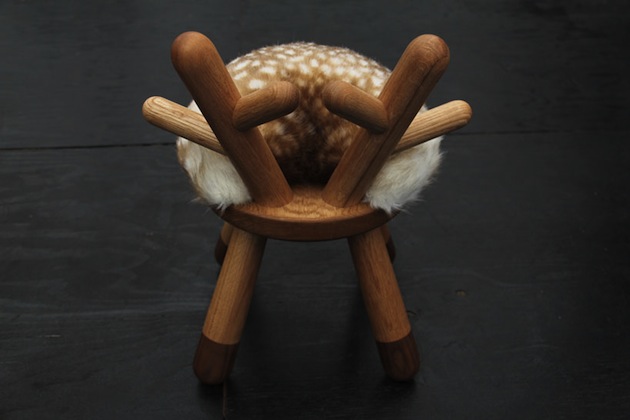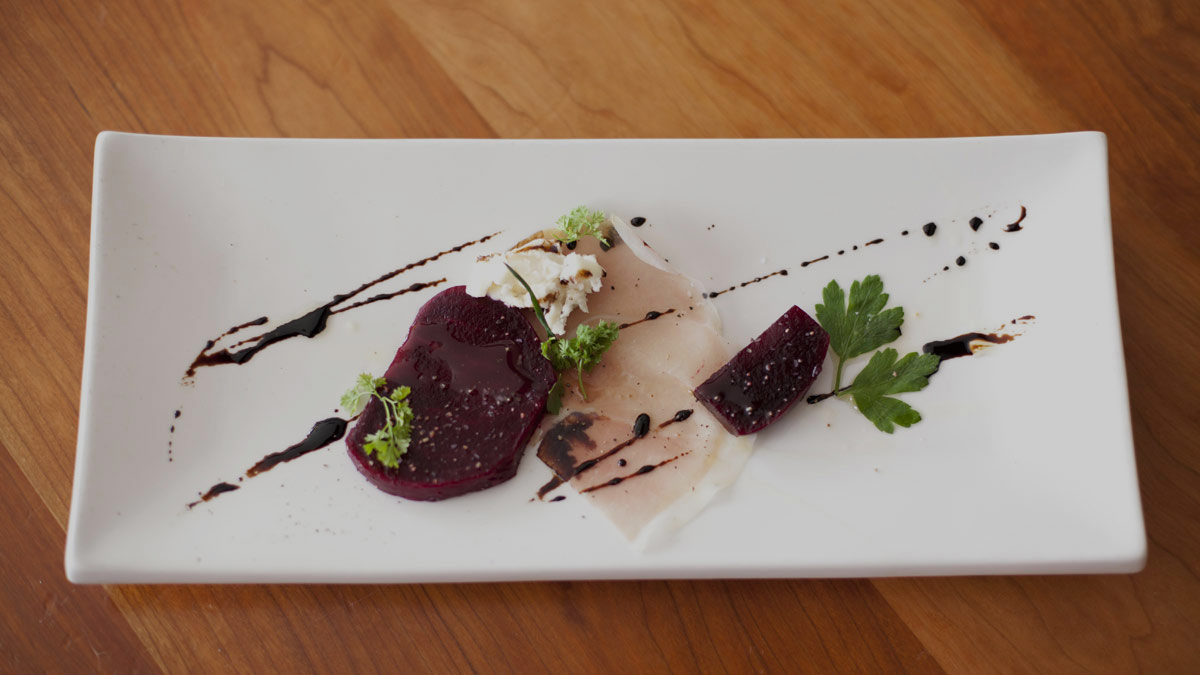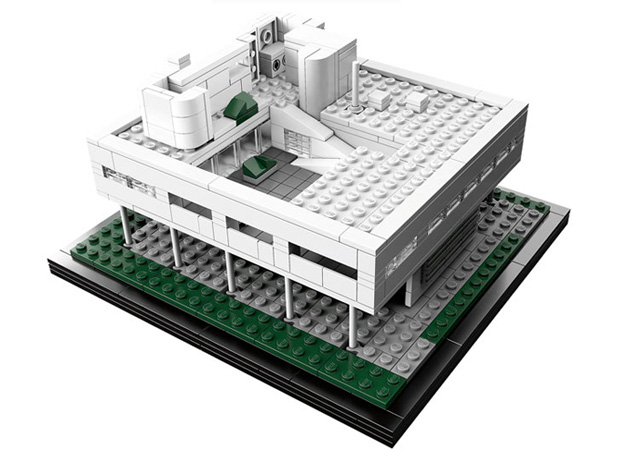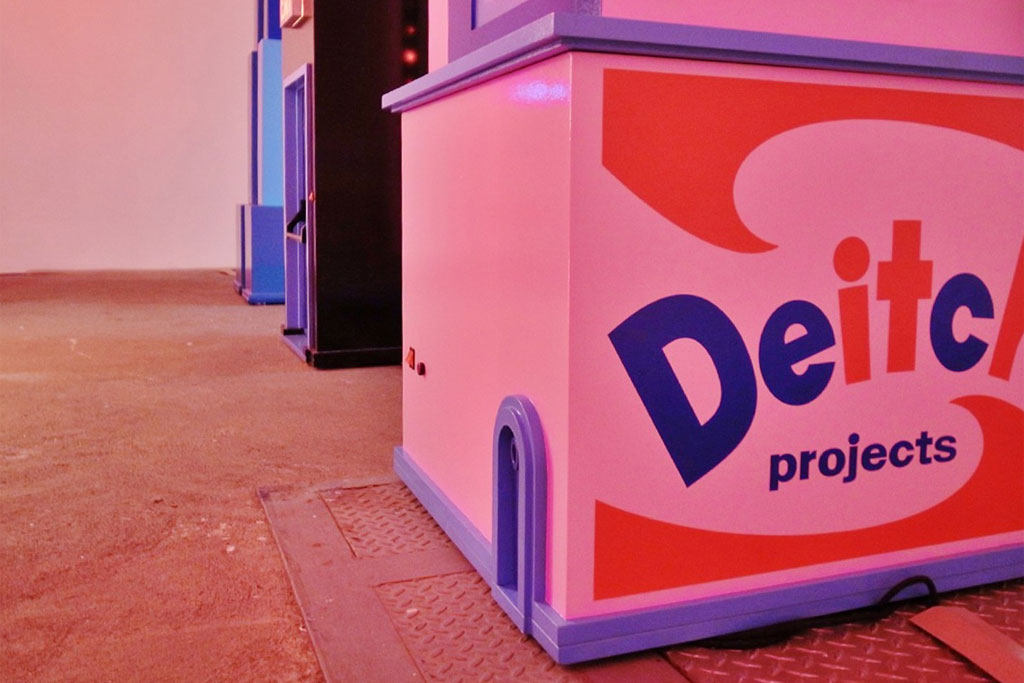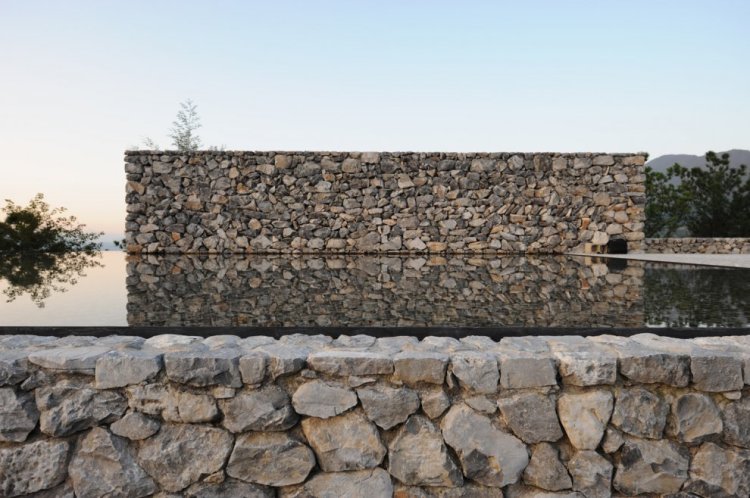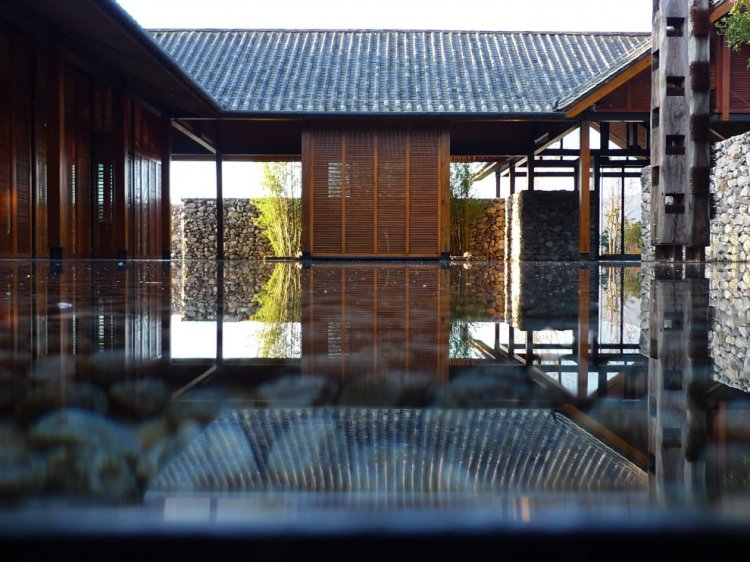Category Archives: ARCHITECTURE
Hypebeast Spaces: The Offices of St. Alfred
Established by the same folks behind KICKS/HI, Chicago’s St. Alfred has evolved into not only one of Chicago’s premier lifestyle shops, but one of the most highly regarded across the country. Having worked with industry heavyweights like Nike, Converse, New Era, Reebok, Vans, and Gatorade to artists like Dalek and Mr. Cartoon, St. Alfred has become a one-stop shop for everything from Stussy, Undefeated, Norse Projects, visvim and WTAPS, to iconic labels like Ray-Ban and Red Wing alongside its own in-house designs. For the latest edition of Spaces, we were fortunate enough to sit down with the brains behind the store at their unified workspace — located just a few doors down from the shop itself. Collectively handling both the buying and day-to-day operations for the store, Frank DiGiovanni, David Robinson and Joe Shaefer sat down to discuss the workspace, the shop itself, and the “breath of fresh air” that the separation provides in fostering creativity and development of the St. Alfred brand.
Poetic Cosmos of the Breath by Tomás Saraceno
Poetic Cosmos of the Breath was an experimental solar dome created by artist Tomas Saraceno. It was launched at dawn on 22 September 2007 at Gunpowder Park, Essex, UK. Commissioned by The Arts Catalyst.
Saraceno is an artist and architect whose utopian visions for cities that float in the air has led him to create a series of experimental structures such as balloons or inflatable modular platforms that can be inhabited and exploit natural energies.
For The Arts Catalyst’s 2nd International Artists Airshow, Saraceno was commissioned to create one of these experimental structures. Despite being postponed due to heavy rain, this successful launch was finally achieved in September.
The Arts Catalyst – www.artscatalyst.org
Poetic Cosmos of the Breath was funded by Arts Council of England, East, and the Henry Moore Foundation
Small Bambi Seat by Takeshi Sawada
Animals and nature are the source for inspiring so many artists and designers out there, and one of the latest and sweetest little stools we’ve seen is the ‘Bambi’ by Japanese designer Takeshi Sawada. Featured at this year’s Designboom Mart, it is a simple little seat with flecked fur and a wooden set of four legs and antler styled back rest. The feet have a ‘hooved’ effect with the darker tone on the bottom and it’s miniature scale pays homage to the beloved Disney character.
Billionaires’ basements: the luxury bunkers making holes in London street
Billionaires’ basements: A new billionaires’ craze for building elaborate subterranean extensions is making swiss cheese of London’s poshest streets – but at what cost?
“The past five years have seen sprawling underground leisure lairs excavated across west London, from Knightsbridge to Belgravia, Fulham to Notting Hill. They contain playrooms and cinemas, bowling alleys and spas, wine cellars and gun rooms – and even a two-storey climbing wall.”
BRIGHT WHITE VILLA IN MALLORCA SPAIN
With a foundation built in the 60s by architect Alberto Rubio, Cala Marmacen Villa is one of the beautiful gems of Mallorca, Spain. With much of the home facing the water and elements– this vacation styled home is an all-white oasis.
Having clearly been renovated since its birth in the 60s era, this exquisite Villa is comprised of four bedroom and bathroom suites, heated floors, panoramic windows, three car garage, a jacuzzi, chef’s kitchen and so much more. At 5,800 square feet and a mere price tag of $12.7 million– it can all be yours, furnishings included.
Lockitron allows you to lock door with phone
Any smartphone can use Lockitron through its intuitive two-button app. With Lockitron you can instantly share access with your family and friends by entering their email address or phone number. Lockitron connects to the Internet thanks to built-in WiFi.
Gianfranco Zaccai: Great food should be like great design
About Why Design
At Herman Miller design is the language we use to ask questions and seek answers to the problems our customers face. The design process is a journey into the unknown—or as George Nelson once quipped, “I have never met a designer who was retained to keep things the same as they were.” Before we decide what we do and how we do it, we like to begin by asking the question “Why?” In Why Design, a new video series, we explore the world through the eyes of our designers, and share something of why we value their point of view.
Gianfranco Zaccai
Gianfranco Zaccai enjoys a design problem and a good meal with equal gusto. Born in Italy, Gianfranco co-founded Continuum, the Boston design firm in 1983. He has designed medical equipment, consumer goods, and retail environments. His passion for research led to the innovative and award-winning Compass system for Herman Miller Healthcare in 2011.
Source
Inside The Brooklyn Nets’ Barclays Center
Nilay Patel joins SB Nation’s Amy K. Nelson to take a look around Brooklyn’s new insanely high-tech stadium, The Barclays Center.
Belkin WeMo Home Automation Switch for your Phone
Belkin’s WeMo Switch($50) is an app-controlled device works with your home’s wi-fi to give your iPhone, iPad, or iPod Touch the ability to turn on or off anything that plugs in. And the app also allows for you to schedule devices on or off time. Operates over Wi-Fi and mobile internet, at home and away.
Frank Gehry and Mark Zuckerberg Collaborate On Facebook Headquarters
Gehry Partners has been commissioned to create the complete “campus” design of the 22 acre headquarters and while it’s in its beginning stages. The building scope itself will take up 10 of the acres, with the 435,000 square feet of interior space being used for open collaboration and a freestyle “warehouse” style approach to work stations to maximize flexibility. As of now, construction is set to begin in 2013. Stay tuned for more information as the details become more concrete.
Black Lodge by Jägnefält Milton
“The basic idea is to complement a luxury resort (situated in an old quarry) with small reclusive huts placed in the nearby forest, close to a deserted beach. Considering all the luxury amenities in the resort, we wanted this to be something completely different. The huts are made of pine trees cut in the same forest as they are standing in. It’s built in an old swedish timber frame technique and warmed by a cast iron stove. The only furniture besides a stool, is a wooden board that can act both as a table, a bench and a bed. All four walls can be opened into the grass creating more of a camp fire situation where you can watch the stars and moon through the oculus. We were able to stretch the simplicity of the project knowing we had all the amenities nearby. The resorts name is Furillen and a first prototype is going to be built this winter.”
Bastard Store and Office by Studiometrico
The Bastard Store and Office is a great example of modern day work spaces that also give you facilities to let a bit of steam off and take the sigh out of everyday going to work. Bastard Store and Office has a terraced office that overlooks a large wooden bowl built for skaters to shred in their downtime. Below the bowl, a full-service retail store welcomes the public in local Milan, Italy.
LEGO Architecture: Le Corbusier’s Villa Savoye
The Le Corbusier’s Villa Savoye home was designed in 1931 in Paris and is still there today if you’re in the neighbourhood. The LEGO Architecture set launched in stores today.
Porsche Pavilion by Henn Architekten
The new Porsche Pavilion at the Autostadt in Wolfsburg, Germany is the first addition to the theme park since its 2000 opening. Designed by German firm Henn Architekten, the curved lines and form are derived from the ‘dynamic flow of driving’, encompassing the universal image of the Porsche brand. following a similar construction to that of monocoque technology – applied to the development of lightweight designs within the automotive and aerospace industries – the sculptural piece of architecture forms a spatial enclosure while acting as a load bearing structure at the same time. At its entrance, it cantilevers outwards at a length of 25m, hovering over the water surface of a built-in lagoon in which a circular walkway runs the perimeter of, allowing visitors to further explore the Autostadt. The exterior is covered in 620 matte-finished stainless steel cladding with welded ribs which were prefabricated in a ship-yard in stralsund and assembled on site resulting in a seamless building skin, positioned within the park in such a way that it mirrors the location of the Volkswagen Pavilion. the surrounding landscape has been executed by WES to make sure the new pavilion seamlessly blends into the overall themes of the surrounding existing park.
An elliptically curved ramp embraces the dynamic principle of the architecture, leading visitors into the interior concept developed by Hg Merz Architeckten Museumsgestalter. the lower 400 m2 exhibition and staging areas house the original Porsche – a 356 no. 1 built in 1948 – which is the starting point of the space, leading to a collection of 25 silver coloured vehicle models at a scale 1:3, presented within the main display area. On show are short films which express the four antagonistic terms which characterize Porsche’s values and philosophy: tradition and innovation, performance and day-to-day practicality, design and functionality, exclusiveness and social acceptance. A film about the company’s history along with sound stories and other Porsche models are also presented to give an overall informative overview of the automotive brand and its history.
Rapha Cycle Club by Brinkworth
Brinkworth were commissioned to develop the Rapha Cycle Club concept into an environment that would reflect the core cultural values of Rapha’s heritage, the glory and suffering of world road cycling. The first permanent UK Cycle Club now open in London’s Soho, builds on Rapha’s vision to provide a meeting place for the cycling community to eat, drink, watch racing and shop from the full Rapha product range, totally immersing themselves in a space dedicated to the pursuit of road cycling…
Andre Saraiva “Andrépolis” Exhibition at The Hole NYC Interview
André Saraiva,the man behind the Mr. A character and the club empire Le Baron, is the focus of this episode of VICE Meets. In the video he talks to Cleo Le Tan about how he got involved in graffiti and his installation at The Hole Gallery in New York.
A Bathing Ape BAPE COFFEE TABLE
A Bathing Ape is introducing a large coffee table later this month as a part of its BAPE STUDY EXHIBITION at BAPE GALLERY. Measuring 60 x 90cm and standing 36cm high, Set for a release on August 18 through BAPEXCLUSIVE locations, the coffee table will retail for ¥68,000 JPY (approximately $869 USD).
The Dawn of the New Retailer: Retail’s Changing Model
Hypebeast Article –
You certainly won’t find today’s most remarkable or valuable retail stores at your local mall.
It all started with the success of Gilt Groupe a few years ago, the entity that took the concept of sample and flash sales online. The past few years have seen the rise of local coupon or group-buying sites, likeGroupon, LivingSocial, and TeamBuy. Meanwhile, in the physical landscape, fast fashion retailers like Zara and H&M are dominating; in fact, Zara already overtook GAP a few years ago to become the world’s largest retailer.
The major beef with Zara is quality. Even though this vertically-integrated company has been crushing sales, its reputation has suffered quietly for its less-than-durable goods and at times plagiarized designs. Zara is looking at methods of growth right now; the fast, aggressive expansion that they’ve been known for is clashing with the growing pains of scaling their own model to span the globe.
Fast fashion is a trend taking over the world. What happens when it reaches a peak, and consumers discover that they want more original goods? What happens when companies are able to combine competitive prices with high quality goods, ranging from fashion to eyewear?
Keep these questions in mind as we explore some of the Internet’s most interesting retail start ups.
Shining Light on Artificially High Prices
“This is technology that was invented 800 years ago. Why should a pair of glasses cost more than an iPhone?” challenges Warby Parker co-founder David Gilboa in his interview with TechCrunch. “We realized the only reason why glasses are so expensive is because there’s a handful of companies that control the supply chain. So there’s one company called Luxottica that basically owns or controls all the brands that most eyewear consumers have heard of. Oakley, Ray-Ban… they own all those brands, and they own licenses to most major fashion houses. Chanel, Prada, Dolce & Gabbana, DKNY; none of those fashion brands actually produce or distribute any of their own eyewear, they just collect a royalty from Luxottica. They also own Lenscrafters, Pearle Vision, Sunglass Hut, Target Optical, Sears Optical, a bunch of other retailers. And they own EyeMed, which is the second largest vision insurance plan in the U.S.”
“They keep the prices artificially high,” chimes in another Warby Parker co-founder Neil Blumenthal.
Today retailers like Everlane, Warby Parker, and Bonobos lead the charge against these artificially-high prices. Each organization is focused on selling designer-quality goods at low prices: Everlane specializes in apparel, Warby Parker concentrates on eyewear, and Bonobos focuses on pants. All of them bypass expensive licensing fees and do everything themselves: design, manufacturing, branding, and retail. Essentially, they’ve cut out the middlemen and retail store costs that play into the logical cause of huge markup. (This is not to ignore the additional markup high-quality brands use to create exclusivity and perceived value.)
Each one does things differently from each other: for example, Everlane has three unique traits:
- Everlane sells four types of goods every month (each one under $100 USD), each of a different variety. For example, in the first month, Everlane could be selling knapsacks, shades, beanies and cardigans. The following month will have none of those items in stock; instead, the only items available will be hoodies, bow ties, leather belts (at-cost sometimes!), and sleeveless tees.
- The company manufactures in small batches, so consumers know that there’s a chance that Everlane may run out of that month’s stock if they bide their time ruminating about a purchase.
- Loyal Everlane customers, thus, aren’t exposed to the same ole’ pair of jeans every month; they get the opportunity to purchase items that they haven’t seen before. Everlane gets loyal customers that are very enthusiastic to re-purchase items next month.
Warby Parker’s unusual approach comes from its flexibility in getting people to try their product:
- Warby Parker makes a Home Try On kit available for free to potential clients; each kit comes with a series of frames that people can try on at home for five days (return shipping is prepaid). If you like what you see, you can pay $95 USD for your prescription eyewear – all inclusive of lenses and frames.
- Also, each time you buy a pair of Warby Parker’s glasses, they give away a pair to someone in need; Sound reminiscent of TOMS’ value proposition?
Bonobos sells really affordable, fitted (and vibrant) pants that are usually price at $88 USD:
- Having started in 2007, Bonobos is in a more advanced stage of expansion than Warby Parker and Everlane. They have been experimenting with ways to scale effectively.
- In April 2012, retailer Nordstrom sunk some money into Bonobos’ equity and has started distributing some of Bonobos’ flagship items at Nordstrom stores. ”We understand there are people who still want to touch and feel clothing before they purchase. We realized we needed help expanding beyond our web-only roots,” says Bonobos founder Andy Dunn.
- Bonobos also is experimenting with a brick and mortar retail store in Boston.
Why hasn’t this been done before?
According to Everlane co-founder Michael Preysman, there are two factors playing into this: radical transparency and the virality of social media. In an interview, Preysman recalls a series of conversations:
“We’ve told people before, ‘Hey, we’re going to tell people how much our T-shirts cost.’
‘Well you’re stupid.’
So maybe we’re stupid, and we’re fine with that.”
Everlane is nowhere near the first company attempting to be transparent; they’re just one of the first to be as vocal about it having selected a powerful medium to evangelize. They’re not afraid to appear stupid either. They’ve gained a ton of attention from a controversial infographics about fashion prices they posted on their Tumblr (at the time of writing, it had over 18,000 notes).
Traditionally, gaining this level of attention would have required a marketing budget, which would have resulted in an increase in markup. However, thanks to the social web, specifically the reblogging nature ofTumblr, and its lack of cost, Everlane was able to create something that appeared before hundreds of thousands of viewers by going viral.
This particular infographic spawned a series of reactions around the blogosphere (many neatly collected in this article), which served to even further its reach. It’s that sort of concept that appeals to the people that turn into customers: Why are you paying this much for designer-quality goods, when you could be paying so much less?
Everlane, Warby Parker, and Bonobos manufacture beautiful and affordable goods. That’s not the only strategy that Internet retailers are taking to set their services apart.
Amongst the Next Generation of Retailers
Controlling Specific Niches
“We put out a product like a journalist writes a story,” explains Chris Lindland. Lindland is the founder and CEO of Betabrand, an internet company that sells apparel. “It’s almost an editorial calendar that drives design.”
Far from just another clothing store, Betabrand sells items with names like “Varsity Bike to Work Pants” and “Reversible Disco Jacket”. Their name reflects their own mentality: They push out new designs every week, and treat each item like it’s still in “beta” format. If an item doesn’t sell well, then they try again in small batches; if an item does, then Betabrand expands on it and creates new varieties of that item to retail. You’re understandably skeptical: Who the hell buys bike to work pants?
“Bicyclists — and, perhaps just as important, hundreds of biking blogs — have adopted Betabrand’s Bike to Work pants (khaki on the outside, with reflective detailing, and priced at $90),” as read in a New York Times article. Betabrand has managed to replicate that kind of virality that Everlane spread with its infographic, albeit to a much more niche audience – cyclists. Imagine the possibilities of the other items; what if disco blogs started blogging about Betabrand’s disco jacket, or if retro blogs started posting about their smoking jackets?
Connecting the Art Ecosystem
If you’ve ever wanted to replace that Godfather poster on your wall, you now have the opportunity to:20×200 sells affordable art. 20×200 pushes out 2 new pieces from a variety of artists weekly; they then manufacture 750 copies of each piece, and once the batches are sold out they’re gone – forever.
“The collectors are delighted — they are getting something that more than delivers on their expectations. To spend $20 and have some of it go directly to the person who made it — that’s hard to do these days, especially at any kind of scale. The artists are making more money than they’ve ever made as artists, in many cases. And their work is being respected and well represented in the process,” elaborates 20×200 founder Jen Bekman.
This young start up has made it feasible for artists to generate decent revenue from practicing what they love. It is creating the new norm that you don’t have to be rich to enjoy art, and that art can be profitable. Perhaps as 20×200 grows, the stigma of not being able to make money in art will slowly start to fade away.
Perfectly-tailored Dress Shirts
Esquire knows to preach against the harms of ballooning dress shirts. The folks at Kinowear have another name for it: “Bad Fit Disease.” Mainstream audiences are starting to realize that shirts aren’t just about patterns and colors; they’re about fit. Thing is, not everyone fits into those slim-fitted shirts at Zara; so what do we do when we want a shirt that fits us just right?
“People really like a Blank Label shirt because they can say, ‘I had a part in creating this,” says Blank Label founder Fan Bi. Blank Label allows customers to create customized dress shirts; like Indochino’s suits, they also have a presence in Shanghai and create products on-demand. Blank Label is an experiment in participatory commerce, with much perceived value coming from what’s known as the IKEA effect: people value things more when they play a part in creating it.
The thing that sets Blank Label apart from Brooks Brothers is price; where a dress shirt from Brooks Brothers might cost a bit over $200, a shirt from Blank Label starts from as low as $78. A more luxurious lifestyle just became much more affordable. Also, these retailers seem to be capitalizing on the long tail and then pushing their way up; for example, perhaps as fitted shirts catch on, Blank Label will grow with the trend.
The Sun is Rising
We’re looking at an interesting collection of companies here; Bonobos is wrestling with a challenge that each startup will have to tackle soon. How do they scale effectively? So far, many of their abilities lie in dealing with small audiences (like batch producing, or customization); how do these abilities get scaled?
A very real possibility of scaling lies with partnership and acquisition: Bonobos serves as a case in point. By bringing their goods ordinarily only available online (or at its flagship store in Boston) to 100 of Nordstorm’s frequently trafficked stores, Bonobos has been able to gain a ton of attention without breaking its marketing budget and still keeping goods at their current price point.
Another potential route is simply expanding slowly into the physical world through different tactics. Custom suit e-commerce company Indochino started opening up pop-up shops and integrating their retailing into reality. This also removes a barrier to many customers wanting to shop; now, customers actually can watch themselves get measured by tailors, and don’t have to worry about measuring themselves incorrectly or improperly.
OR, perhaps they don’t expand into physical world: in order to play competitively with physical stores, they all try to stay online and use that medium to keep costs low and spread word virally. The matter will be whether or not consumer behavior changes fast enough to keep up with this strategy; for example, people are already trying on goods using augmented reality.
Peering into the future, it’s going to be interesting watching these e-commerce retailers trying to take their businesses to the next level. The sobering reality is that Bonobos generates around $1 million/month, where a retailer like Nordstrom makes $10 billion/year (stats in this NYT article). The road to the top is a long one for these e-tailers, especially if they want to travel it on their own. How will these companies make it independently? Will they all end up being acquired as an arm of larger retailers in their own respective industries in the struggle to survive?
Or can they continue their innovative streak long enough to outlast their traditional counterparts?
Herbert Lui is passionate about entrepreneurship, art, and technology. In his spare time, he covers technology and startup news for Techvibes and CutEdge. If you want to connect (or heckle), please feel free to reach out on Twitter.
The Water House, Li Xiaodong Atelier
The water house is a private house, located at the foot of snow mountain Yulong in Lijiang. Sitting on a wide open sloping site, which has a panoramic view towards Lijiang, an ancient trading settlement whose old town is famous for its historic network of waterways and bridges. The site lies at the foot of Yulong mountain, its peaks forming a dramatic backdrop to Li’s architecture. The house synthesises traditional forms and techniques to make a contemporary building that resonates with place and history. and the surrounding landscape. Conceived as an interlocking series of contemplative, inward-looking courtyards, the house has an open yet closed courtyard space. Closed in the sense, it is “secured” and “separated” physically from the ‘outside world” by design elements such as stone wall, reflective pool and leveling; yet it is open visually towards the outside environment.
The low profile architectural language by using local material and simple “non-experimental” tectonic skill is meant to blend the “artificial” into the nature and local culture. Here, focus is given to space and atmosphere. Emphasis is on local-texture and non-decorative detailing, the idea is to make the house a background, from which, nature could be appreciated to its extreme. The cluster of simple timber and glass pavilions with tile-clad pitched roofs evokes traditional forms but is still evidently of its time. Lightweight, slatted walls delicately veil the light, and bamboo plants form a luxuriant green heart in the building’s central courtyard. The cooling, calming presence of water threads through the house and low eaves frame and enclose indoor/outdoor spaces. The interior space is a minimum design, the intention of which is to leave indoor space clear and simple as much as possible, so that nature could be appreciated more from within. Li considers details are important contributors to the final results of the architecture, in this case, instead of decorative details, seamless clean details are designed to provide elegance to the overall effect of architecture.
SushiTa Restaurant
SushiTa entrusts Solodesign to design its new restaurant in Ancona (Italy). Using natural and eco-friendly materials.
The kaiten is a moving ribbon bringing dishes made by the Japanese chef and is the focus point of the room. It is enlighted by an installation made by a rain of wooden pendants from the ceiling thus highlighting its sinuous path and both projecting evocative lights and shadow plays in the meantime.
Room’ s bottom wall portrays a koi carp, raising sun iconography’ s traditional symbol, but it’ s molded with a tipiccally European pattern, as to synthesize the project’ s essence: the meeting of two cultures – East and West.
Lighting has been designed in collaboration with light designer Stefano Dall’ Osso using last generation energy saving technologies with a domotic control system so to create different backgrounds.












